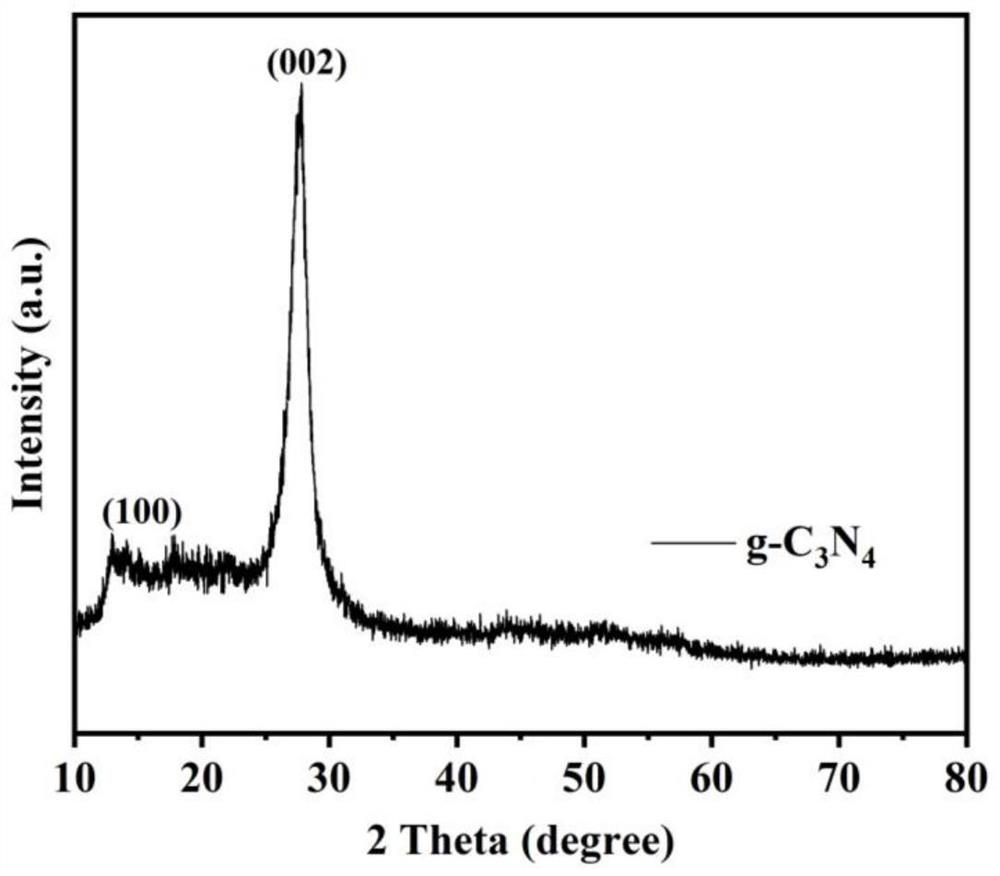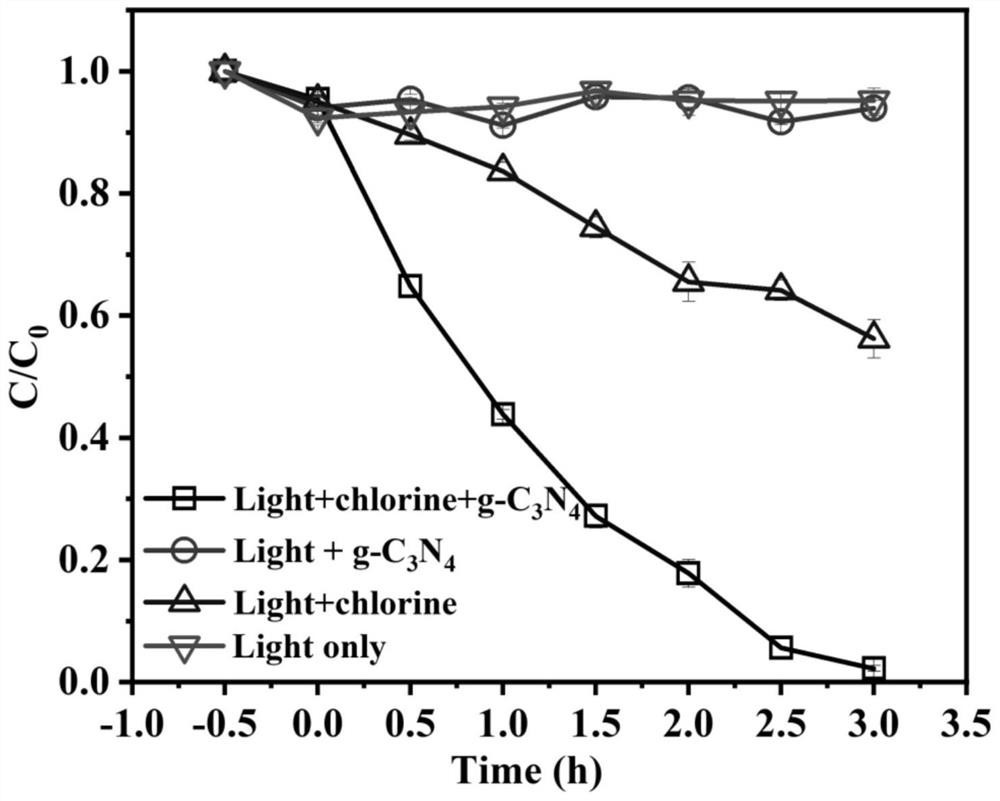Application of ground-state oxygen-dominated photocatalysts in photocatalytic degradation of pollutants
A photocatalyst, oxygen atom technology, applied in the field of photocatalytic degradation, can solve the problems of incomplete removal of pollutants, toxicity, slow oxidation of organic pollutants, etc.
- Summary
- Abstract
- Description
- Claims
- Application Information
AI Technical Summary
Problems solved by technology
Method used
Image
Examples
Embodiment 1
[0047] Example 1: Ground state oxygen atoms dominate the degradation of the drug carbamazepine.
[0048] (1) Preparation of g-C 3 N 4 : Weigh 10g of urea and place it in a crucible with a lid, and place it in a muffle furnace at 5°C for min. -1 The heating rate was heated to 550 °C and then held for 2 h. Collect the light yellow product, grind it into powder with an agate mortar for further use, and the obtained powder product is g-C 3 N 4 .
[0049] for the obtained g-C 3 N 4 testing, such as Figures 1 to 3 shown, figure 1 for g-C 3 N 4 SEM images of figure 2 for g-C 3 N 4 TEM image of , image 3 for g-C 3 N 4 of the X-ray diffraction pattern.
[0050] (2) Weigh 10mg of g-C 3 N 4 The catalyst was placed in a test tube, 50 mL of 10 mg / L carbamazepine solution was added to the test tube, stirred under a magnetic stirrer, and the speed was set to 500 rpm for the reaction, and the above solution was magnetically stirred for 30 min to ensure that the adsorptio...
Embodiment 2
[0053] Example 2: Ground-state oxygen-dominated degradation of the dye Rhodamine B.
[0054] (1) Weigh 50mg of g-C 3 N 4 The catalyst was placed in a test tube, 50 mL of 20 mg / L Rhodamine B solution was added to the test tube, stirred under a magnetic stirrer, and the speed was set to 500 rpm for reaction, and the above solution was magnetically stirred for 30 min to ensure that the adsorption / desorption equilibrium was reached. . Then add 100 μL of sodium hypochlorite solution to the system and turn on the 500W xenon lamp to start timing.
[0055] (2) Take a sample every 30 minutes, filter the obtained solution through a 0.22 μm organic polytetrafluoroethylene disposable filter head, and measure the residual Rhodamine B concentration in the system with an ultraviolet spectrophotometer.
[0056] The experimental results are as Figure 4 As shown, within 6h, under the irradiation of 500W xenon lamp, g-C was added 3 N 4 The degradation rate of rhodamine B by the system wit...
Embodiment 3
[0057] Example 3: Quenching experiment of photocatalytic degradation of carbamazepine dominated by ground-state oxygen atoms
[0058] (1) Weigh 10mg of g-C 3 N 4 The catalyst was placed in a glass bottle with a stopper, 50mL of 10mg / L carbamazepine solution was added to the bottle, the stopper was plugged after nitrogen was passed for 30min, placed under a magnetic stirrer to stir, and the rotating speed was set to 500rpm to carry out the reaction. The solution was magnetically stirred for 30 min to ensure adsorption / desorption equilibrium was reached. Then add 50 μL of sodium hypochlorite solution to the system and turn on the 500W xenon lamp to start timing.
[0059] (2) Take a sample every 30 minutes, filter the obtained solution through a 0.22 μm organic polytetrafluoroethylene disposable filter head, and use high performance liquid chromatography to measure the residual carbamazepine concentration in the system. Before the dark reaction, the reaction solution was purge...
PUM
 Login to View More
Login to View More Abstract
Description
Claims
Application Information
 Login to View More
Login to View More - R&D
- Intellectual Property
- Life Sciences
- Materials
- Tech Scout
- Unparalleled Data Quality
- Higher Quality Content
- 60% Fewer Hallucinations
Browse by: Latest US Patents, China's latest patents, Technical Efficacy Thesaurus, Application Domain, Technology Topic, Popular Technical Reports.
© 2025 PatSnap. All rights reserved.Legal|Privacy policy|Modern Slavery Act Transparency Statement|Sitemap|About US| Contact US: help@patsnap.com



